High key photography is a technique used to create unique artistic images by intentionally overexposing a scene. Special post-processing techniques are used to create a very light image that enhances textures, shadows and contrast, particularly with black and white conversions.
I was recently inspired to explore high key photography during our local Lone Tree Photography Club meeting. Club President, Chuck Rasco, provided before and after images of a tree he had photographed (shown below). He described the techniques used in post-processing with Photoshop and NIK Silver Efex Pro. The “after” image, shown below has won a pair of image competition awards. The day after our meeting, I went back through my catalog of photos. I found several that had previously been overlooked, yet could be candidates for high key.
.mgl-tiles { display: none; } #mgl-gallery-634ec596b1861 { margin: -5px; width: calc(100% + 10px); } #mgl-gallery-634ec596b1861 .mgl-box { padding: 5px; } @media screen and (max-width: 768px) { #mgl-gallery-634ec596b1861 { margin: -5px; width: calc(100% + 10px); } #mgl-gallery-634ec596b1861 .mgl-box { padding: 5px; } } @media screen and (max-width: 460px) { #mgl-gallery-634ec596b1861 { margin: -5px; width: calc(100% + 10px); } #mgl-gallery-634ec596b1861 .mgl-box { padding: 5px; } }
Chuck Rasco – Initial Capture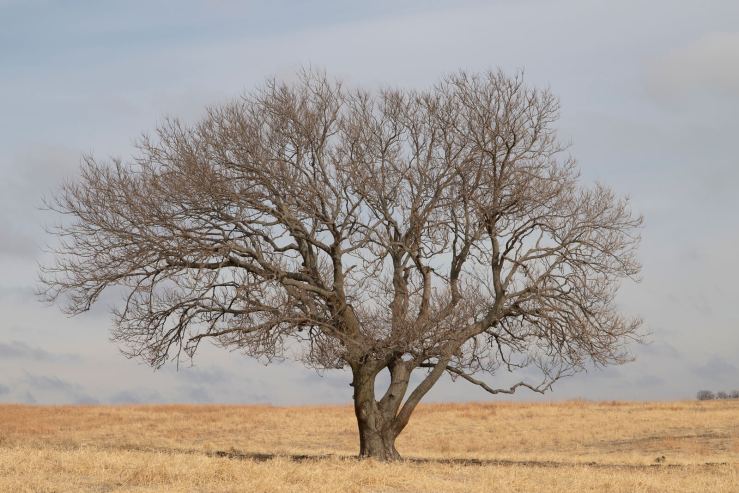
Chuck Rasco – Processed High Key Image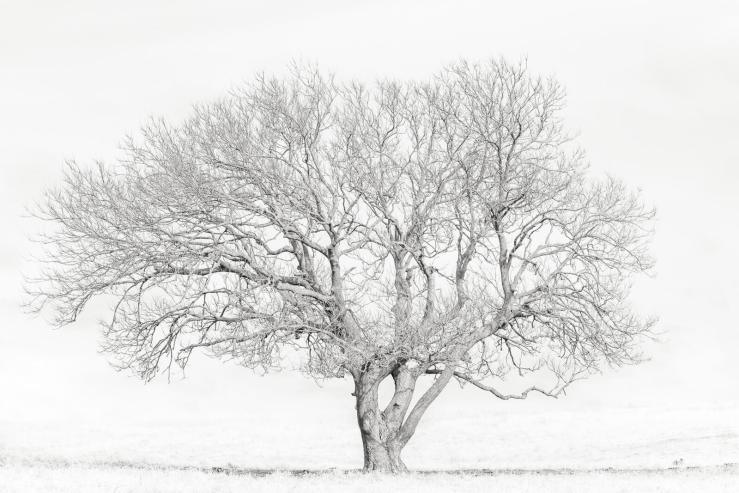
“We were out on the eastern plains photographing an old barn when I turned around and saw this tree that caught my attention. I have an idea for this one.” Chuck Rasco
Capturing images for high key
There are often times when conditions are not ideal for traditional color landscape images. Overcast conditions with flat gray light and underwhelming skies are great for shooting high key. Camera settings should be set to overexpose the scene. This can be accomplished by reducing the shutter speed and/or increasing ISO. Take multiple shots until the histogram shows data as far to the right as possible, being careful not to blow out the highlights. Don’t be concerned if the image on the back of the screen is unimpressive, as it will look much different after post-processing.
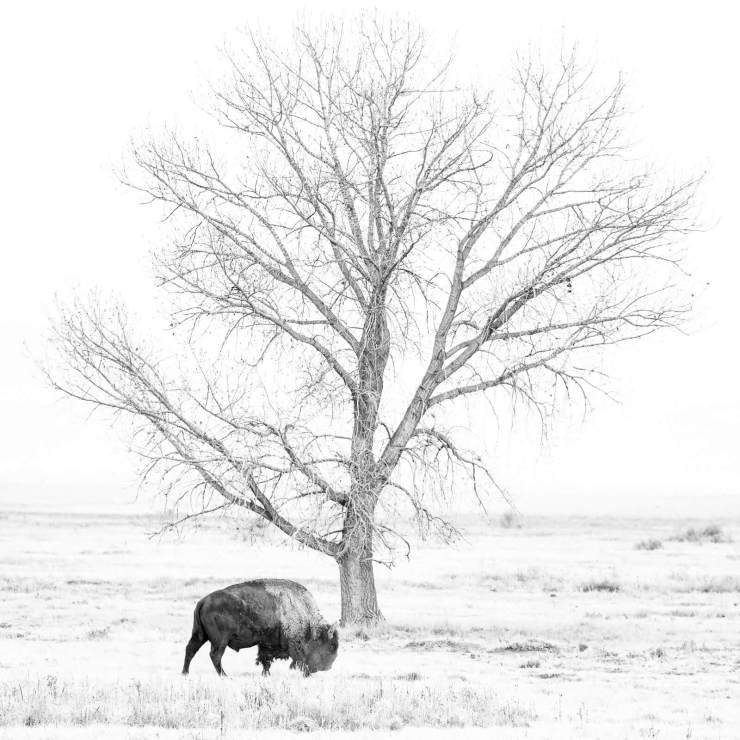
Post-processing high key images
There are several techniques that can be used to bring out the high-key look. All of the standard RAW processing programs can be used for high-key processing. For my initial processing, I often use Adobe Lightroom and Photoshop, however other programs including Capture One, Affinity Photo and ON1 are also great options.
The first step is to convert the image to black and white to see if it has potential. My next step is to move between the exposure, highlights, whites and contrast sliders to get the desired effect. Data in the histogram should be pushed all the way to the right edge. For added contrast, I typically slide the shadows and black sliders slightly to the left. However, a true high key effect can also be created by lightning shadows.
Using plug-ins
It can be helpful to use a plug-in software program to achieve unique results. After making my initial adjustments in Photoshop, I open the NIK Silver Efex Pro plug-in. The two “high key” presets are good to start with. I make further adjustments using the sliders to add structure and amplify the blacks slightly. The image is then saved and brought back into Photoshop. If there are any distracting elements in the image, I open the Adobe Camera Raw filter with a brush set to full exposure and remove those items.
As a final step, I used Topaz DeNoise AI to reduce the noise and increase the sharpness to the final image.
.mgl-tiles { display: none; } #mgl-gallery-634ec596b2591 { margin: -5px; width: calc(100% + 10px); } #mgl-gallery-634ec596b2591 .mgl-box { padding: 5px; } @media screen and (max-width: 768px) { #mgl-gallery-634ec596b2591 { margin: -5px; width: calc(100% + 10px); } #mgl-gallery-634ec596b2591 .mgl-box { padding: 5px; } } @media screen and (max-width: 460px) { #mgl-gallery-634ec596b2591 { margin: -5px; width: calc(100% + 10px); } #mgl-gallery-634ec596b2591 .mgl-box { padding: 5px; } }
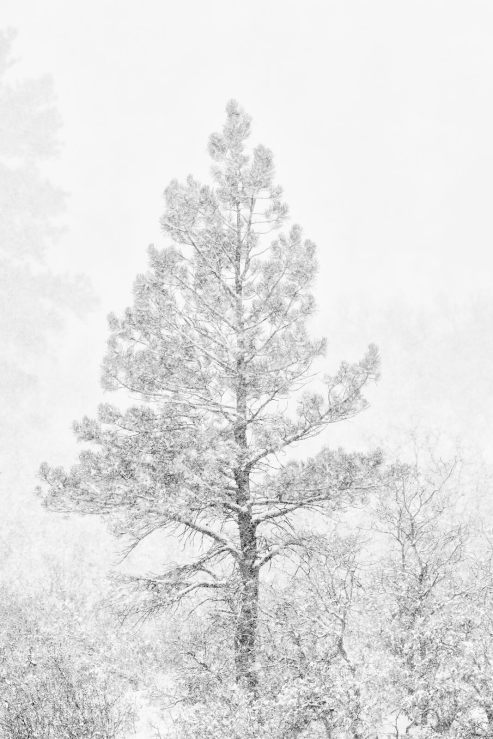
Simple dormant plant photographed in high-key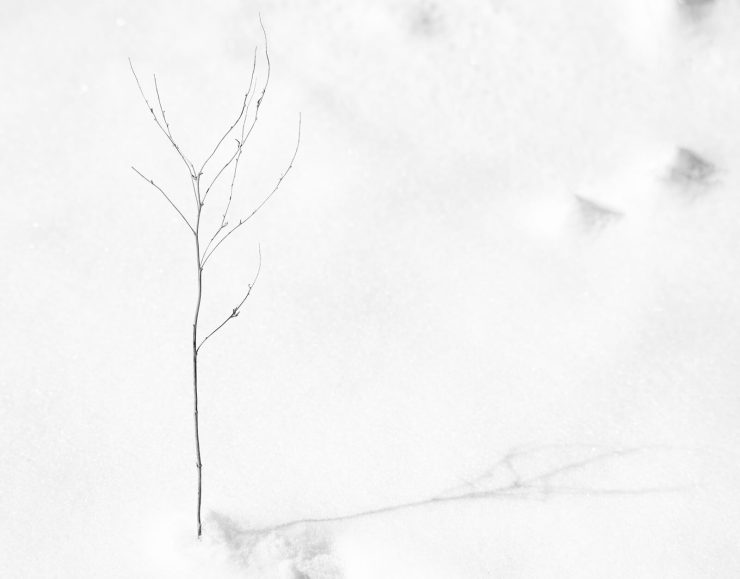
Wildlife in high key
Animals, birds and wildlife can also be fun to experiment with in high key, particularly when against a light background. The same techniques used for capturing and processing high key landscape images can be used for wildlife. Be sure to increase the shutter speed if the birds or animals are moving. The higher shutter speed will likely require increasing the ISO to ensure the exposure remains to the right side of the histogram.
.mgl-tiles { display: none; } #mgl-gallery-634ec596b2cfd { margin: -5px; width: calc(100% + 10px); } #mgl-gallery-634ec596b2cfd .mgl-box { padding: 5px; } @media screen and (max-width: 768px) { #mgl-gallery-634ec596b2cfd { margin: -5px; width: calc(100% + 10px); } #mgl-gallery-634ec596b2cfd .mgl-box { padding: 5px; } } @media screen and (max-width: 460px) { #mgl-gallery-634ec596b2cfd { margin: -5px; width: calc(100% + 10px); } #mgl-gallery-634ec596b2cfd .mgl-box { padding: 5px; } }
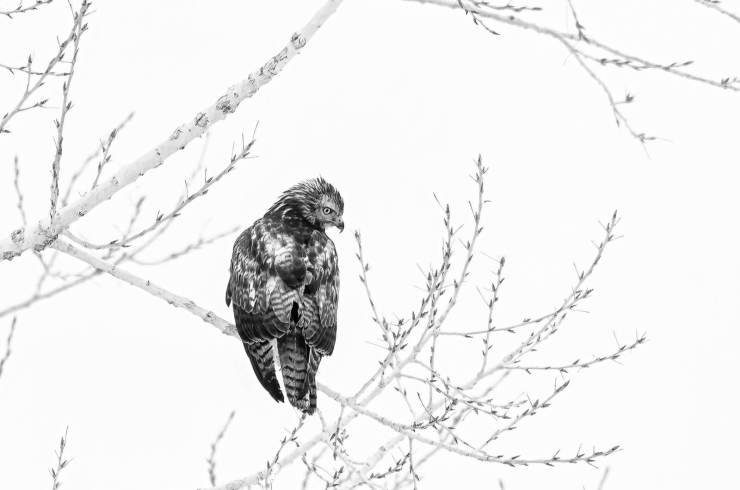
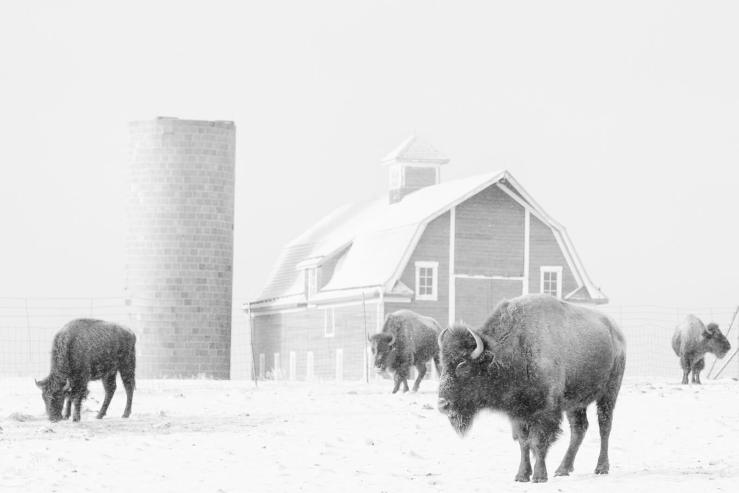
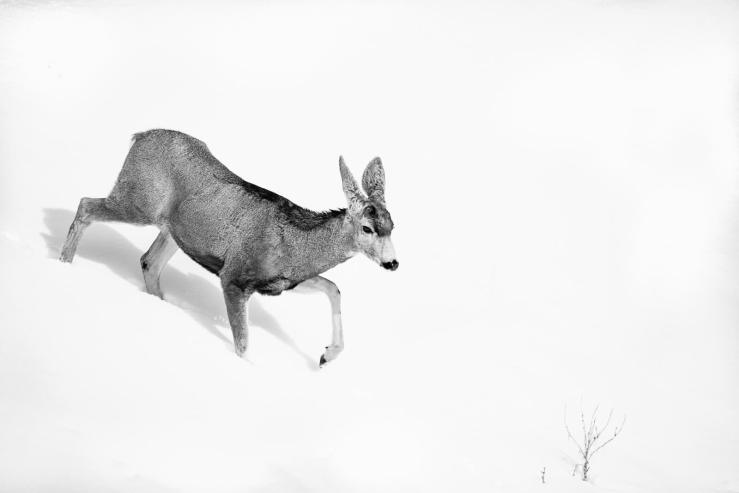
A great way to use the light there is (or isn’t)
High key landscape and wildlife photography can be a great way to take advantage of flat light. Now that I have been introduced to this creative type of photography, I will be looking for high-key opportunities when the conditions are right. I highly recommend experimenting with high-key photography for landscape and wildlife photographers looking for something new.
Tell your story with the second annual Visual Storytelling Conference!
Experience four days of interactive, online training sessions featuring a range of educational content with experienced photographers and content creators. This free event kicks off with a series of technical boot camps to build essential skills, followed by live, online sessions on photography, video, business and social media. Join live from March 10-13, 2022!
